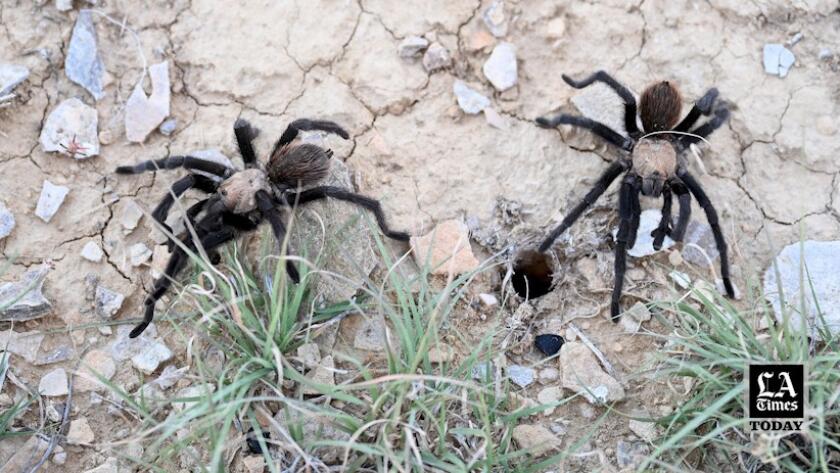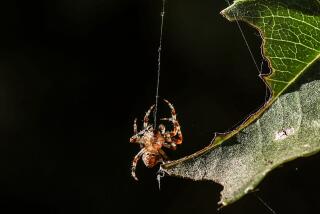
- Share via
LA JUNTA, Colo. — Each autumn in this sprawling, flat corner of southeastern Colorado, thousands upon thousands of creatures are on the move — some on eight legs, some on two.
Scientists, nature enthusiasts and that rare subspecies of humanity obsessed with spiders all come to witness something remarkable: hordes of fuzzy, fist-sized male tarantulas emerging from their burrows to scour the shortgrass prairie for mates.
The parking lots were full and cars lined the roads at the 440,000-acre Comanche National Grassland and nearby Vogel Canyon.
Charlie Fox, a flooring installer from suburban Denver, and his two grandkids peered into a spider burrow. Fox, 70, owns 10 tarantulas and is something of a thrill seeker. He lost half a finger in an alligator wrestling mishap at a reptile park, where the preserved digit is displayed in the gift shop. And he wrangles rattlesnakes.
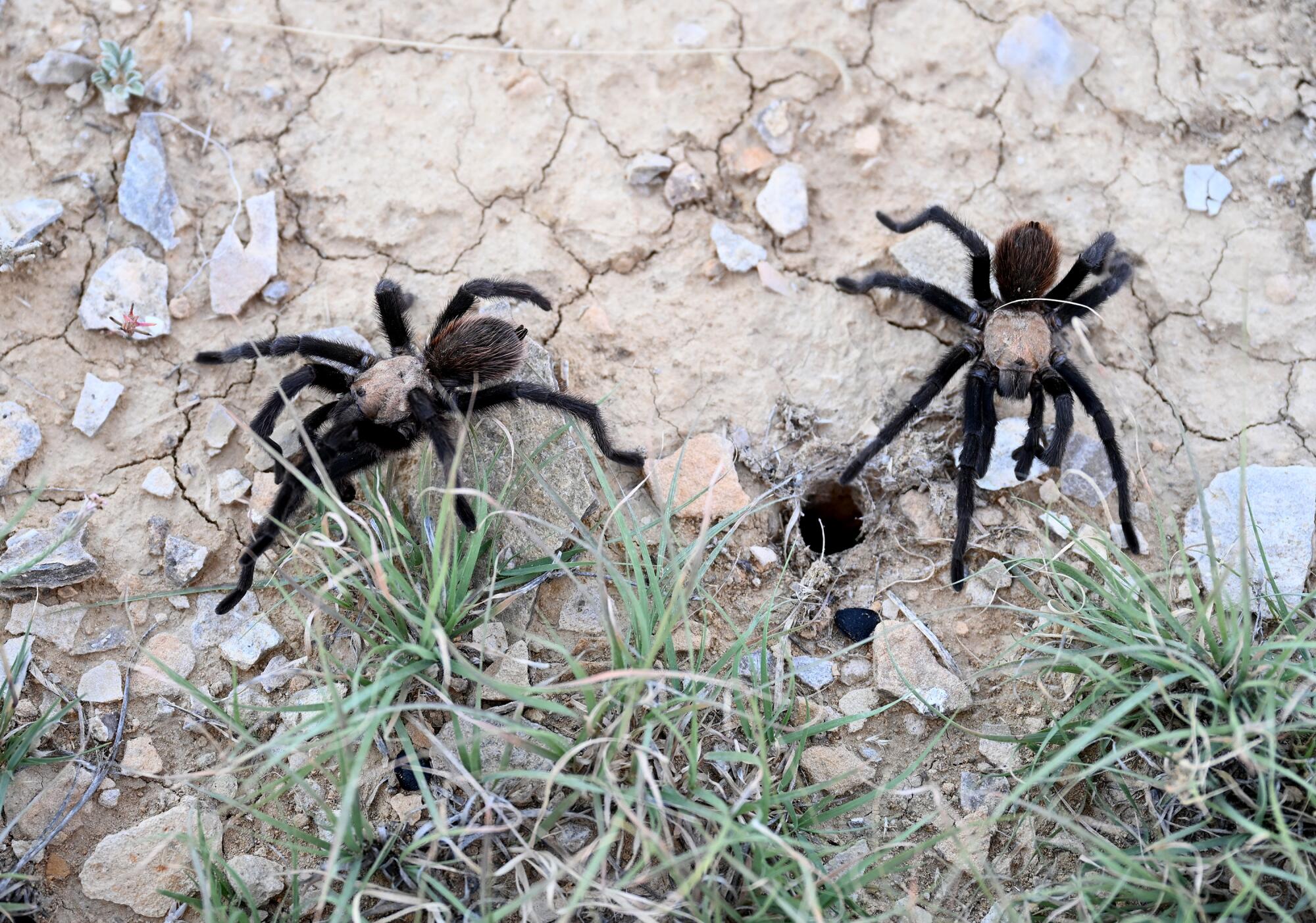
“I love tarantulas and I wanted these guys to see them in the wild,” he said. “I’ll look for snakes when the sun goes down.”
Up on the nearby road, tarantulas plodded across the pavement as traffic slowed to avoid crushing them. So many are squished each year that scientists are proposing tunnels to help them traverse certain roadways.
Aphonopelma hentzi, commonly known as the Oklahoma or Texas brown tarantula, ranges as far east as Louisiana with especially high densities in this part of Colorado.
One of the larger cities in the area, La Junta, is developing a tourism industry around the spiders, with a tarantula festival, a tarantula website and tarantula murals all over town.
“We want to be known as the tarantula capital of the world,” said Mayor Joe Ayala. “We want to be the home where the tarantulas roam.”
Tarantula fans say the spiders don’t deserve their horror-movie reputation. Despite their fierce looks, tarantulas are mostly docile. Their bites are painful, but the venom is usually harmless to humans.
At their worst, they can kick off small hairs that can irritate the skin — researchers call it getting “haired.”
Jackie Billotte, 36, fell in love with spiders as a girl growing up in the Denver suburb of Aurora. She used empty, gallon-sized ketchup and mustard containers from her grandfather’s restaurant to catch them.
“I really wanted a tarantula but my mom was having none of that,” she said. “When I was really small we’d get ants and roly-polies and make enclosures.”
Today she is a graduate student at Colorado State University who studies tarantulas and shares her home with 64 of them — plus four scorpions, a black widow, two snakes, a jumping spider that just had babies, a colony of feigning death beetles and three dogs.
Earlier this month, she and several other researchers and volunteers fanned out across a stretch of prairie near the town of Lamar, 55 miles east of La Junta.
They had come during mating season to study tarantula burrows, whose intricate shape may help explain how they survive the harsh Colorado winters. Each spider digs its own and spends most of its time there.
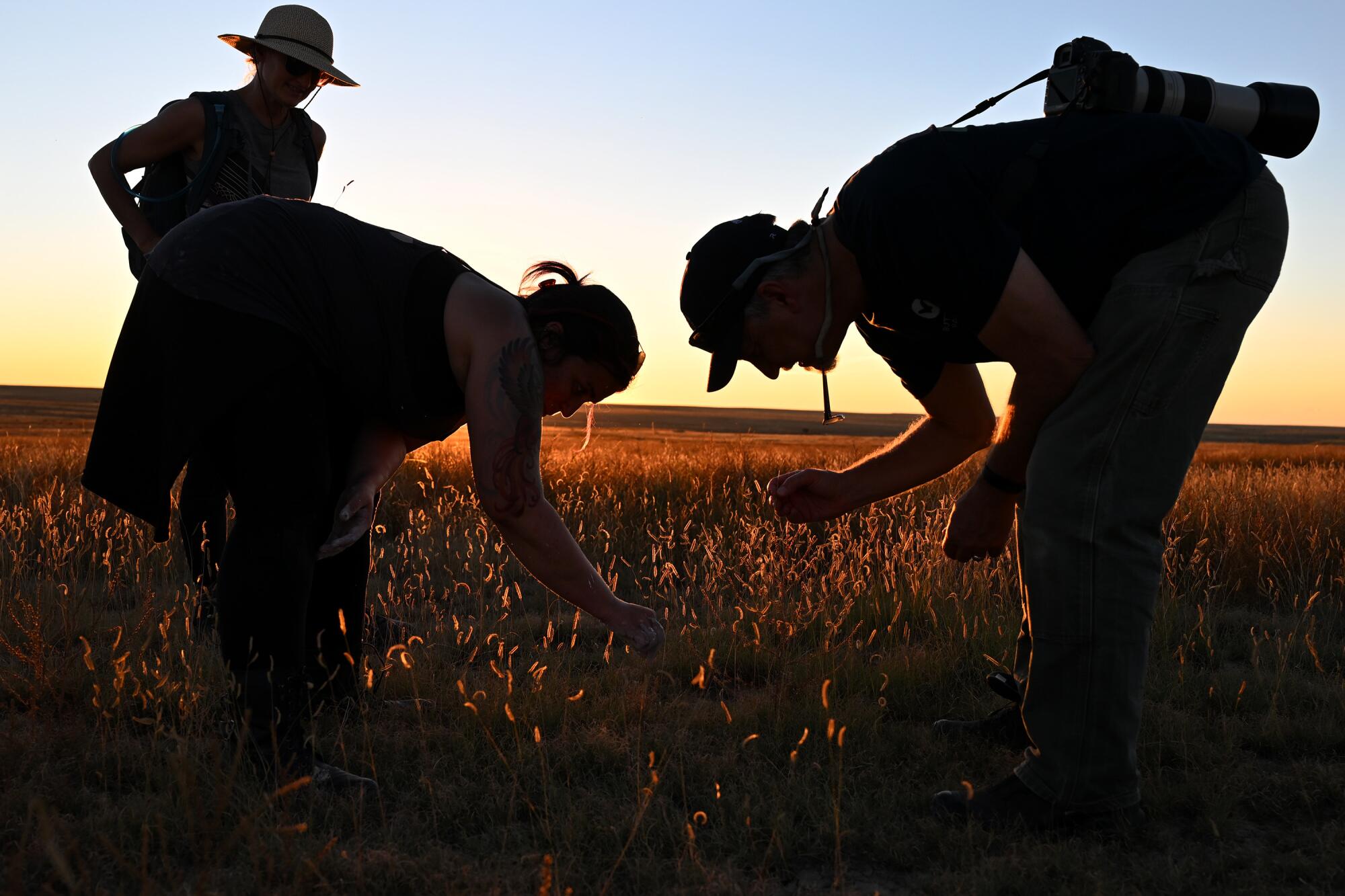
The mission was to lure six females out of their burrows, secure them in containers, then pour plaster of Paris down each hole to create a cast of the chamber. The next day they would dig up the cast and put the females into new burrows that the researchers started for them.
As dusk fell, sweltering heat gave way to sultry breezes. Across the field, everyone fished for spiders. They crouched over golf-ball sized holes, gently waving blades of grass, trying to entice a female out.
Someone shouted.
“I got her out!” announced Terri Bauer, a social worker and volunteer at Butterfly Pavilion, a zoo for invertebrates and research center outside Denver.
Bauer was thrilled. Growing up, her friends called her Terri Tarantula because of her infatuation with the fanged, eight-eyed arachnid. At 18, she got a tarantula tattoo on her foot.
“Oh man, this is the best day,” she said.
Female brown tarantulas typically live about 30 years and never move more than a few inches from their burrows. Males have much shorter lives. Around age 10, they venture out during the fall in search of mates.
“The males will wander up to a mile this time of year,” said Billotte, who was careful not to step on any of the single-minded, love-sick tarantulas crawling in front of her. “That’s a long way when you’re only 6 inches long.”
One scaled a colleague’s leg, reaching his shoulder before he gently placed it near a female’s burrow.
“You going to set him up?” asked Billotte.
The male drummed its feet at the entrance, hoping the vibrations would bring out the female. It worked. They stood face-to-face, locked in a mating dance, silhouetted against the setting sun.
Afterward, the females often eat their hapless mates, who are an excellent source of protein.
“He may die, but what a way to go,” Billotte said.
Those that escape face other perils: starvation, deadly cold, predators and, of course, car and truck tires.
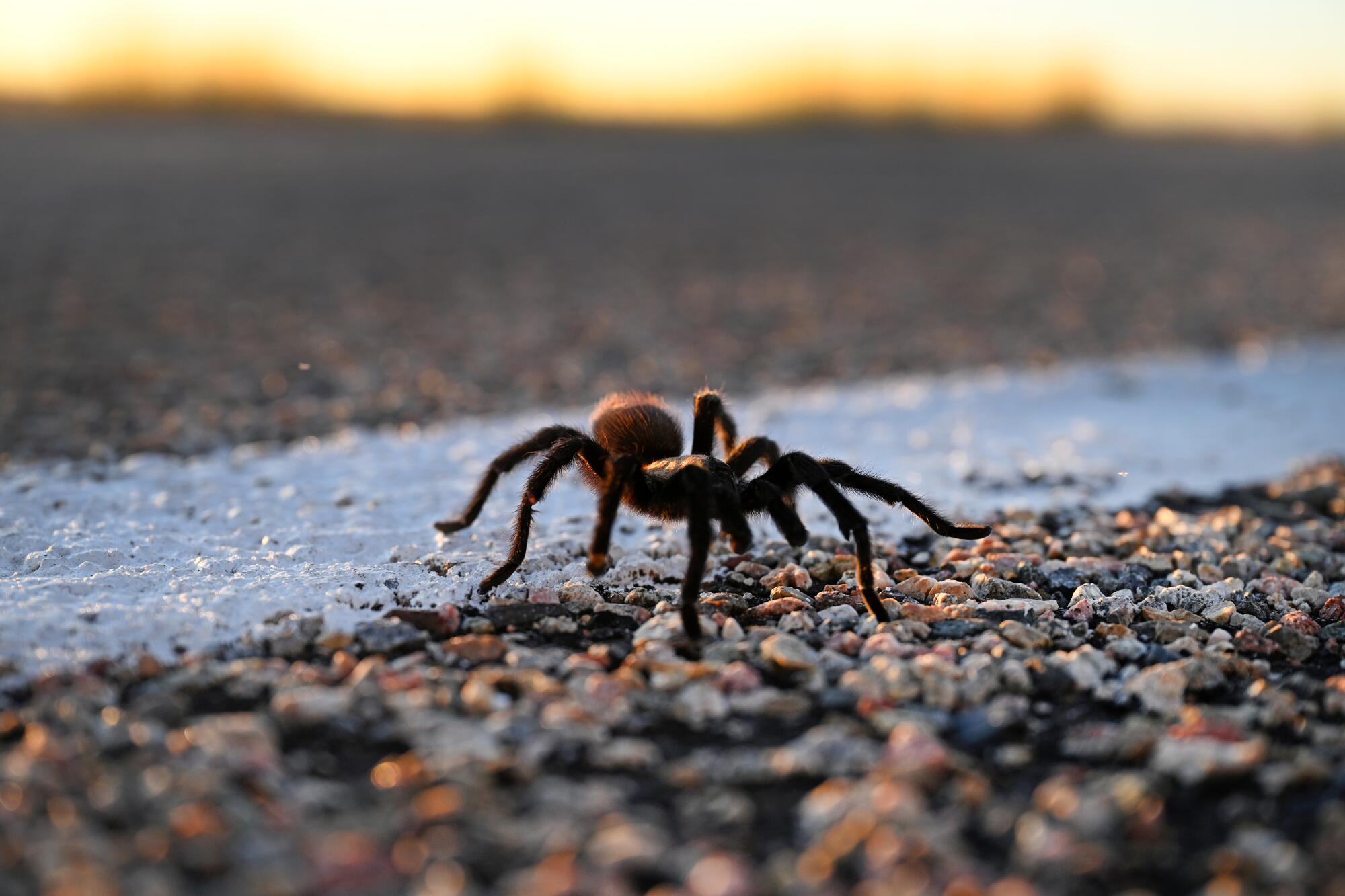
And that’s the other reason the researchers were visiting — to persuade the state to install tarantula tunnels, probably about a foot wide, to keep the spiders safe from traffic.
“It’s pretty upsetting to see them dead in the road,” Billotte said. “There was space for them before we built the road, and we broke that.”
It’s unclear how much the underpasses would cost. The plan would also require low fences in areas of high spider density to funnel the creatures into the tunnels.
It’s a hard sell. Tarantulas are not endangered. They are not much of a threat to motorists.
And while millions of dollars have been spent on overpasses so deer, elk and mountain lions can safely cross highways, tarantulas don’t get much sympathy from the public.
Rich Reading, vice president of science and conservation at Butterfly Pavilion, said tarantulas deserve saving because they are predators that help control pests including grasshoppers and beetles.
“And because they are cool,” he added.
The Colorado Department of Transportation has provided 10 wildlife cameras to help figure out where tarantulas tend to cross the roads. The researchers were installing them. Depending on the findings, the state has promised as many as 140 more.
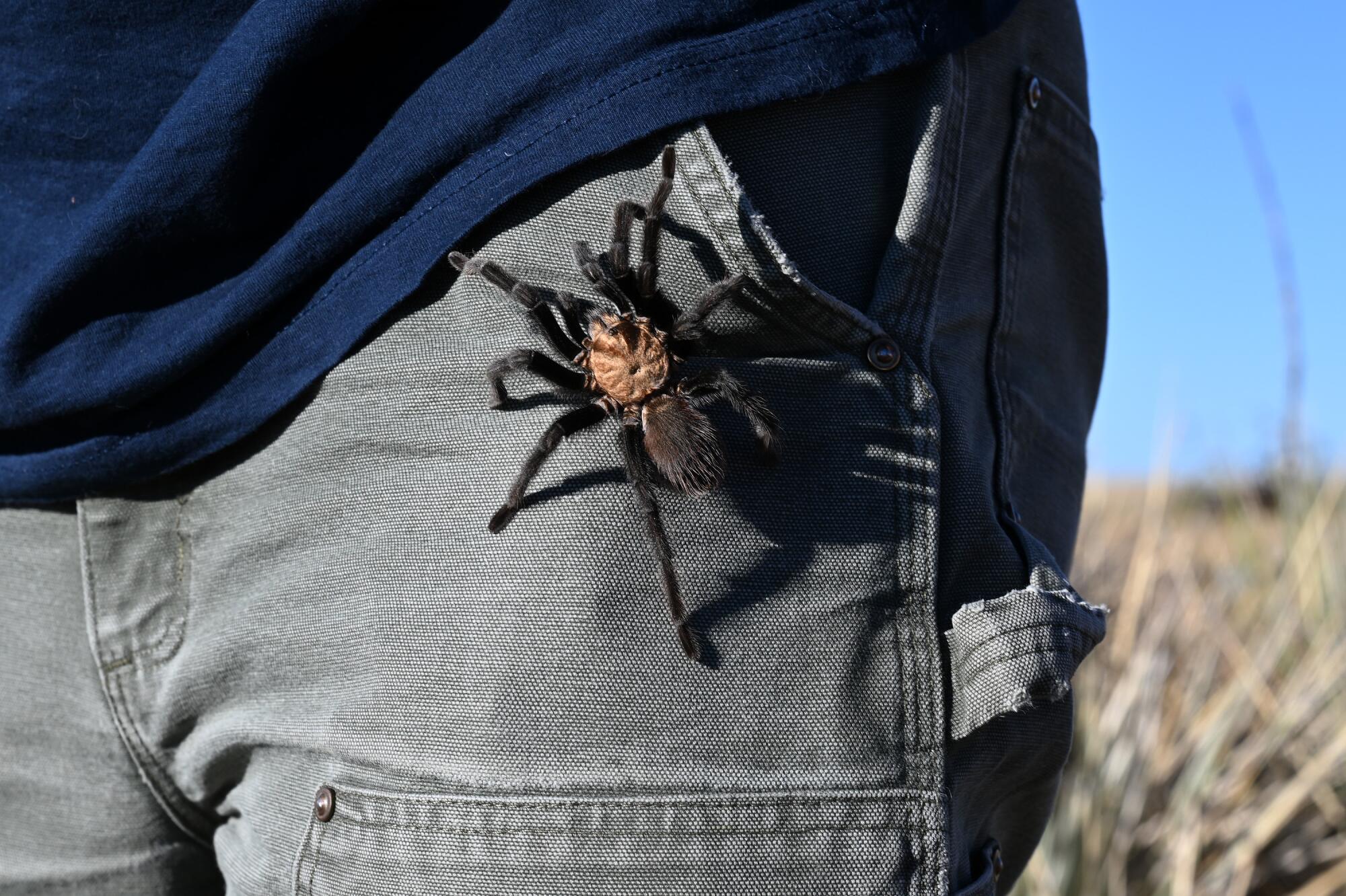
“We’ll see what we catch on camera, get some preliminary data and work out the kinks,” said Lorna McCallister, the research manager at Butterfly Pavilion.
The state transportation department is less concerned about the spiders than it is about the possibility of traffic accidents.
Michelle Peulen, a spokesperson for the department, wondered about the hazards caused by drivers stopping along the highways during mating season.
“Do we need tarantula signage or pull-offs on highways for people to see them?”
This month, La Junta, population 6,900, held its first annual Tarantula Fest, which featured music, a beer garden, a parade, an eight-legged race and expert-guided tarantula tours in the grasslands.
One of the most ornate tarantula paintings covers the side of the Halloween Shop. Another festoons a wall in LiveWell Park. And when a car plowed through a local real estate office, the hole was covered with plywood and a tarantula painted over it.
“It was a case of taking lemons and making lemonade,” said Pamela Denahy, the town’s director of tourism and events.
La Junta isn’t the first Colorado town to celebrate its local fauna or flora with a festival. Denahy hopes tarantulas give La Junta the same economic boost that snow geese, sandhill cranes, mountain plovers, rutting elk and even watermelons have given other communities.
A sign outside the Junction 50 Galleria announced “Tarantulas Are Coming Information Here.”
Char Hosea, who operates a booth there, fiddled with a smiling, tarantula doll she created.
“When we first moved here we had a big one show up on our doorstep,” she said. “If you get too close, they will rear up at you.”
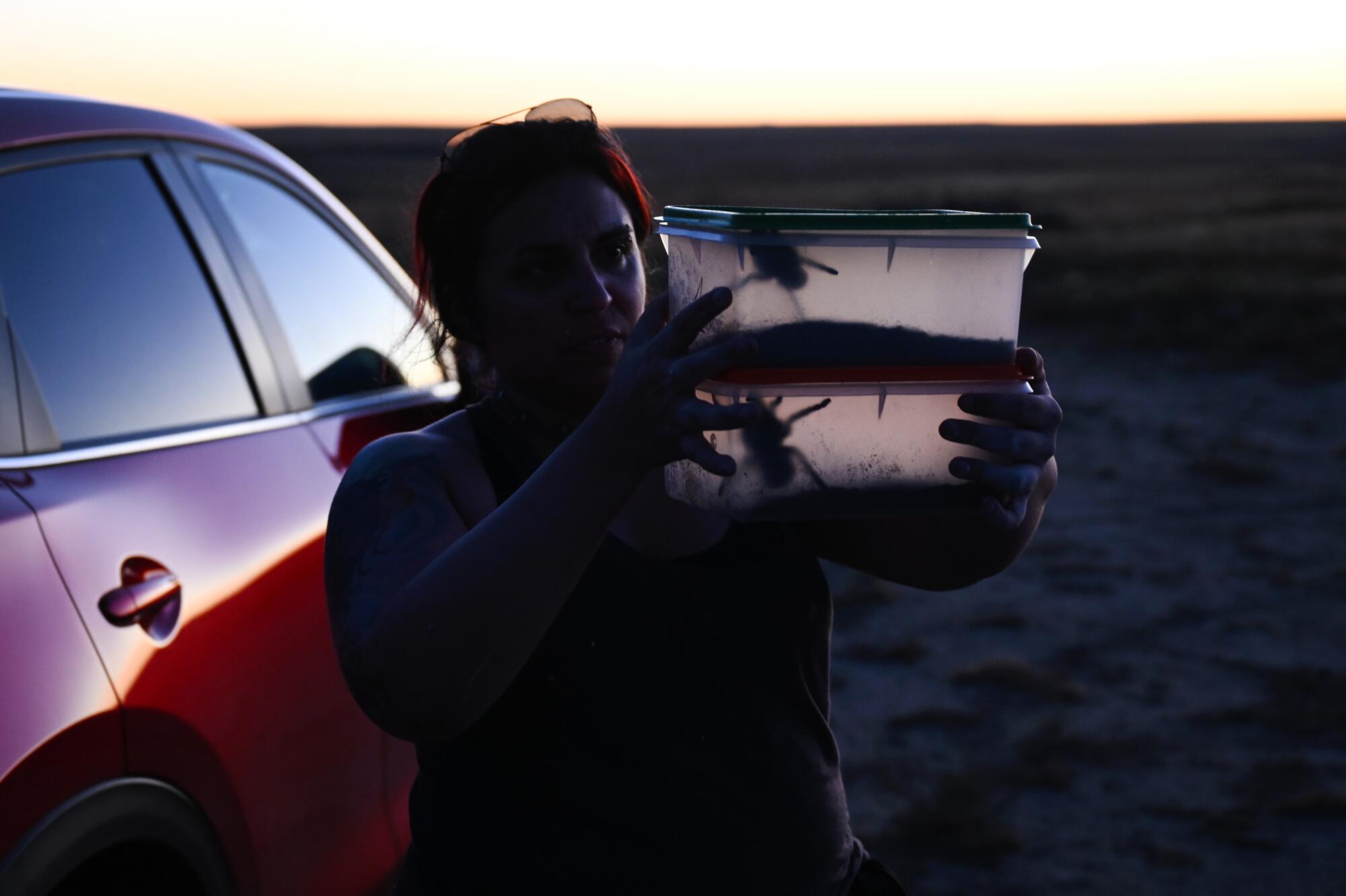
Her husband, Cliff, said skirting them on the highway isn’t always easy.
“If you come over a hill, they can be hard to miss,” he said. “Sometimes there will be 40 in the road.”
Back at Vogel Canyon, about 15 miles away, people wandered the fields looking for tarantulas.
It’s not illegal to capture and keep them, but it’s highly discouraged. Regardless, any male captured would be near the end of its life and not survive long in captivity.
Jennifer Meerpohl, from Colorado Springs, was celebrating her daughter’s 11th birthday.
The girl and her friends roamed the cactus-studded landscape, enthusiastically announcing every sighting. Tarantulas crept over their shoes.
“Hazel has loved spiders since she was a baby,” Meerpohl said. “I had arachnophobia until she was born.”
Soon, darkness fell. The crowds thinned as shadowy figures using flashlights walked carefully back to their cars. Thousands of determined tarantulas continued their quest.
- Share via
Watch L.A. Times Today at 7 p.m. on Spectrum News 1 on Channel 1 or live stream on the Spectrum News App. Palos Verdes Peninsula and Orange County viewers can watch on Cox Systems on channel 99.
Kelly is a special correspondent.
More to Read
Sign up for Essential California
The most important California stories and recommendations in your inbox every morning.
You may occasionally receive promotional content from the Los Angeles Times.
